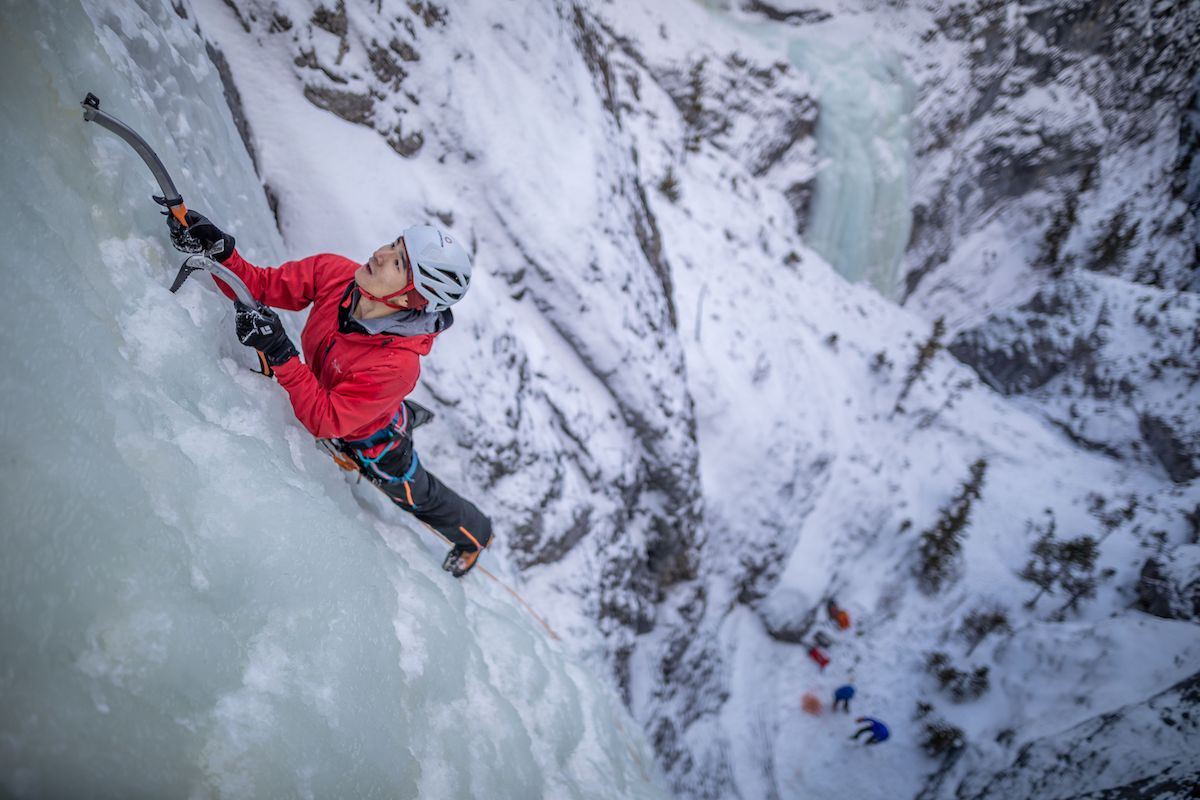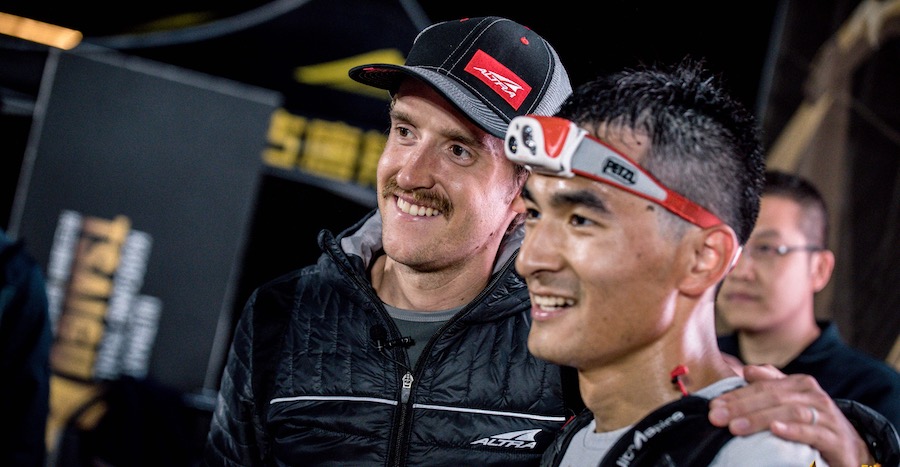
If you break it down to the beginning, Garmin is kind of responsible for where COROS is today.
“For one of my birthdays, a friend gave me an REI gift card,” remembers Lewis Wu, CEO of COROS, an upstart company in the GPS watch scene and direct competitor to Garmin. “I went ahead and bought a Garmin watch. I felt like ‘hey, this data in the watch is pretty interesting.’”
That interest blossomed alongside a new-found love of running. Meanwhile, Wu ascended to a top role in his company, and within a short time, an opportunity arose at COROS for Wu to lead.
Despite never working in the athletic or outdoor industry, Wu had a passion for the outdoors that began from hiking in his home country of China and carried over to technical climbing and running in the United States.
That passion, coupled with a strong background in marketing, led Wu to take the role of CEO at COROS in early 2018. From there, he would man the helm of three product launches in the coming year that would define the company and its relationship to the running scene.
In a way, GPS technology guided him much further than any run or hike could take him.
If you’re at all involved in the running scene, and especially the trail running scene, you’ve likely seen or heard about COROS watches over the last year. In 2018 they released both the PACE and the APEX (read our review here), along with the new VERTIX GPS Adventure Watch— a device meant for extreme athletes (i.e. alpine climbers, ultrarunners, etc.), with an unheard of 60-hour battery life.
COROS is known for cornering the trail market, and rightly so—even the APEX watch, with 35-hour battery life, will get most people through a hundred miler. To date, its sponsored athletes are a who’s who of ultrarunning—athletes like Tim Tollefson, Camille Herron, and Hayden Hawks.
“We want them to be the face of the brand,” affirmed Wu. “They are going through tougher environments of rain, snow, or mud. People assume if a watch is able to handle trail running, it’ll probably be okay for a road runner.”
In April, Wu actually brought Hawks to his hometown of Linhai, China, to run the Ultimate Tsaigu, a race with an 80km distance featuring 15,000 feet of climbing. In an insanely muddy year, Hawk broke the course record in 9:40:55.
For Wu, it was his first 50-mile finish, finishing in 33rd place out of 800-plus runners.
Both were testing the VERTIX, of course.

Wu and Hawks at the Ultra Tsaigu
While Wu grew up in China, he came to the United States by way of work. His first job after college was at China-based TP-Link, the world’s largest manufacturer of consumer Internet routers. Eventually he became the head of North American operations, a significant achievement overseeing $200 million in annual sales.
However, in early 2018, the mountains were calling. Or at least, the devices that people wear while climbing mountains.
At that time, COROS was preparing to launch the PACE, followed by the APEX later in the year, and eventually the VERTIX, released in June 2019. While COROS had been working on its entire GPS watch line since its inception in 2015 (it was mostly known as a smart bike helmet company in the beginning), the software development phase took almost three years to complete.
During that time, the company was on Wu’s radar—a personal friend was one of its key partners.
However, joining the company too early—while the products were still in development—wouldn’t have worked for Wu, whose expertise lies in product roadmap planning, brand building, and navigation of sales channels.
“After watching this company for a long time, I believed it was the right time for me to join the team,” said Wu.
After Wu came on, the company began marketing towards runners (as well as other endurance athletes) in a direct and purposeful way. For ultrarunners, there are two GPS watch qualities that are of utmost importance—battery life and GPS accuracy.
Along with the aforementioned top-of-its-class battery life for both the VERTIX and the APEX, Wu is confident the company’s GPS technology can also stand up to any competitor. At its core, COROS’s majority investor is China-based YF Tech, a company that specializes in car GPS technology, notably for Volkswagen and other major car manufacturers.
“We always have the passion to do something closely tied to GPS because we know we’re going to make amazing products,” said Wu.
Additionally, COROS was one of the first companies to use a next-gen Sony chipset in its APEX watch (the VERTIX uses it as well), followed five months later by Garmin with their premium MARQ watch. COROS claims their watch is better performing than any others that use the same chipset, due to proprietary intuitive antenna design and power-efficient technology.
“Our GPS accuracy is top-class, and even better than Garmin or Suunto,” noted Wu. “Other companies are reaching out to Sony saying ‘hey, what did COROS do to make their watch so accurate?’.
Proving that accuracy has its challenges. For those familiar with COROS products, it’s known that the workout distance recorded by its watches is almost always shorter than other GPS companies, a confidence killer for Strava hounds (shorter distance + same time = slower pace). COROS, however, defends this data to their death, even going so far as to post a lengthy blog detailing its findings against its competitors.
While some can debate the GPS accuracy of COROS watches versus its competitors, it’s hard to do so for the user experience of the products.
Across the board, COROS watches feature incredibly intuitive user controls and interfaces. The VERTIX features only three controls—a backlight, an over-sized crown knob dial with a push-button design, and a back button. The COROS app is similarly pared down and uncluttered. For COROS, it’s intentional. In fact, you won’t find a PDF manual for any of the watches; it simply doesn’t exist.
“Garmin, Suunto and older brands, they started creating their watches maybe 10 years ago. And that was a PC world. But when things went to mobile, they tried to put so many features from a PC into a small screen,” pointed out Wu. “When we started designing our product, we started fresh, from mobile only. That’s why it’s so easy to use and so user-friendly.”
Then there’s the design.
While some people have commented that the VERTIX looks oddly similar to a Garmin Fenix 5, the reality is that both are built to be rugged GPS watches. However, for COROS, a touch of luxury was also a part of the blueprint.
“High profile mountaineers already have sponsorships from luxury watches,” said Wu, pointing out the way in which luxury brands posture their ads to signal the spirit of exploration (think: GQ insert of a dashing Brit wearing a Tag Heuer on an Arctic exploration). However, COROS wanted the VERTIX to be the actual watch that adventurers embrace on their actual expeditions.
“We don’t just want to have a product that looks like a mountain watch, we want to be the true mountain watch,” said Wu.
With its extreme battery life, 24/7 blood oxygen monitoring with altitude mode, and rugged titanium construction, the VERTIX certainly fits the mold. Surely, it’s more than capable for even the most aggressive runner.
A watch with those capabilities cannot be ignored, certainly not by COROS’s competitors. For some smaller companies on par with COROS, this could lead to rushed development cycles to keep ahead of the curve. But for COROS, patience is key.
“We’ve been waiting for the company to be successful for two years, and we don’t mind waiting another two years,” said Wu. “People won’t trust your product unless you are proven to be solid and reliable. But it takes time.”
Like any company getting its legs under it, there have been some bumps in the road.
During beta testing for the PACE, the company was delighted to have hundreds of applicants for testing. However, it turns out that most of them were bigger fans of getting free product than giving back solid feedback to the engineers. Lessons learned.
However, the positives have far outweighed the negatives for Wu, who couldn’t be happier to be where he’s with COROS, and in life. In early June, 2019, he climbed The Nose on El Capitan in Yosemite, Calif., spending two nights on the wall. This was one of his biggest personal outdoor projects in years. He continues to split his climbing time with running time on the trails. With COROS’s thick ties to the running scene, he almost has no choice. Nevertheless, he’s pretty fine with it.
“Everybody in the running community is so nice. One person can be a coach, a store owner, a race director, and a podcast host,” said Wu.
Comparing it to the siloed environment of his previous job, Wu laughed. “If you know one person, you have tons of connections. People are so nice and will introduce you to others. I really, really like being in the running community.”
This is a sponsored post by COROS Wearables. However, all content was written from a journalistic interview perspective.
Have something to say? Leave a Comment
Nice article. Add support to Go365. There are a limited amount of devices that sync your steps. More steps = more prizes (bigger prizes). I use Fitbit to track my steps on Go365. I’m getting close to try a Garmin.